The breaststroke is a power-intensive stroke that requires a combination of patience, power, and position. So, it is not surprising that one would need regular training sessions to get used to the intensity.
While the breaststroke is done in water, you do not necessarily have to be in the water to exercise for it. You can practice some routines out of the pool and rev your muscles up to match the intensity of the stroke.
In this article, we discuss 16 of the best dryland exercises for the breaststroke. We also give an overview of how to perform each routine.
Barbell Bicep Curl
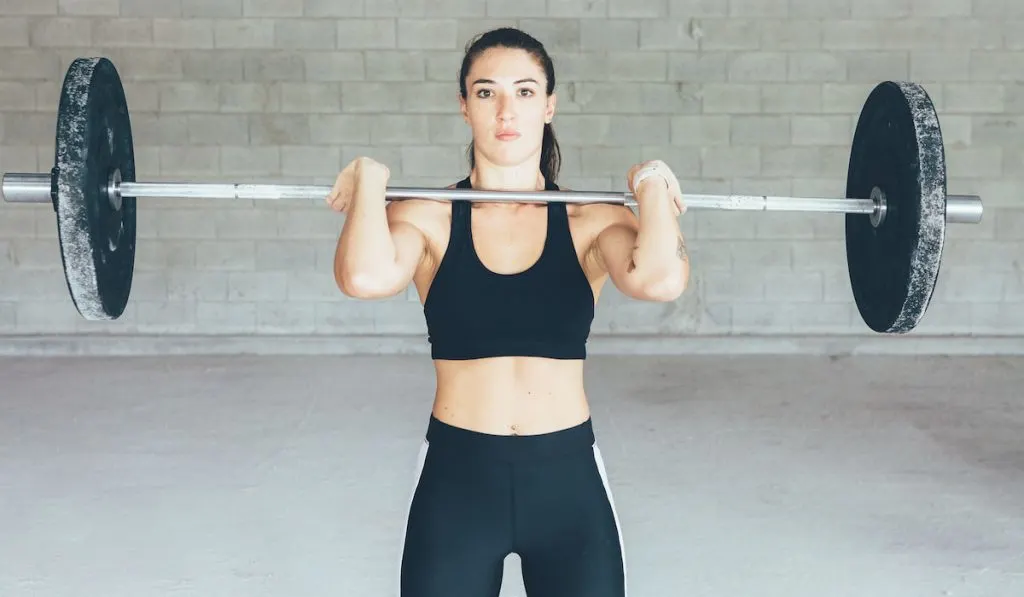
The bicep curl helps develop biceps strength. For breaststroke swimmers, having strong biceps is essential to execute the pulling motion of their stroke.
To pull the barbell bicep curl off, you need a barbell or weight you can grip in one hand.
To execute the barbell bicep curl:
- Ensure you have a good standing posture as you hold the bar with an underhand grip.
- Without leaning back, slowly raise the bar towards your chest until it is level with your shoulder.
- Do not use any momentum as you raise the bar.
- Return the barbell to the start position so your biceps can relax.
Calf raises help to develop calf strength. They also strengthen the Achilles tendon, which swimmers use in the breaststroke kick.
Calf Raises
Calf raises are only necessary if you lack strength in your calves.
To do a calf raise, follow these steps:
- Start by standing with a good posture and your feet shoulder-width apart.
- Apply pressure on your toes and feel your calves contract.
- Slowly lower yourself to the start position and repeat the exercise.
Dips
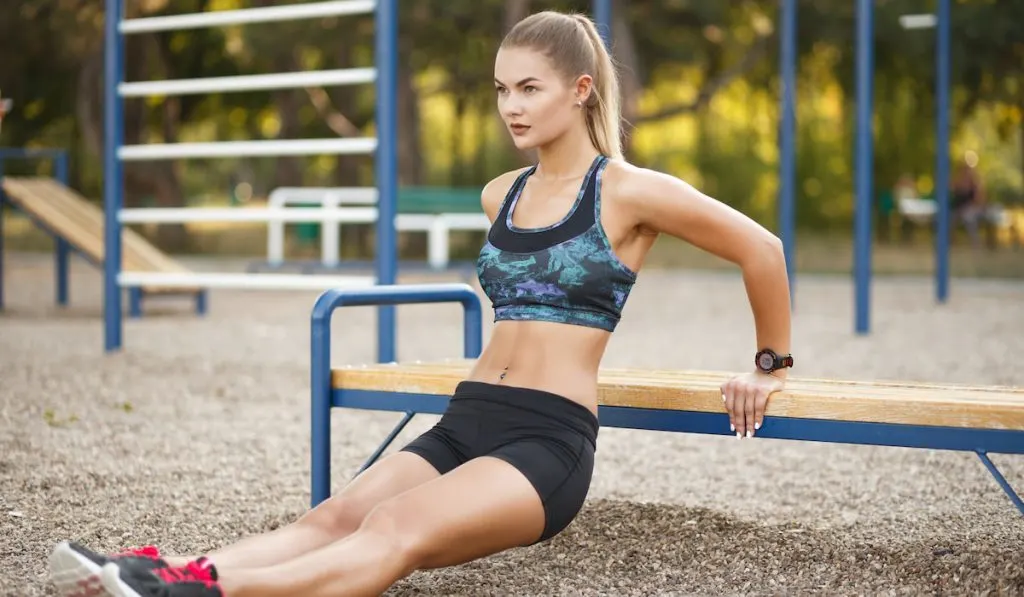
The dip is an exercise geared toward improving the frontal muscles of your upper body, which include the triceps, chest, and biceps. It can also help you develop strong shoulders.
The dip has three different variations:
- The first variation of the dip is performed on parallel dip bars. This variation is effective and highly recommended. However, not many swimmers have access to this equipment.
- Straight bar dip is the second variation, and it is performed on single pull-up bars.
- The third variation is the bench dip performed anywhere with an elevated surface like a step or bench.
How to execute dips with parallel dip bars:
- Start by holding the parallel dip bars and jumping up while you support your weight with your arms.
- Lower your chest forward by bending your arms backward.
- Dip down until you feel a stretch in your shoulders.
- Ensure you straighten your arms as you return to the starting position.
External Rotations With Resistance Band or Tubing
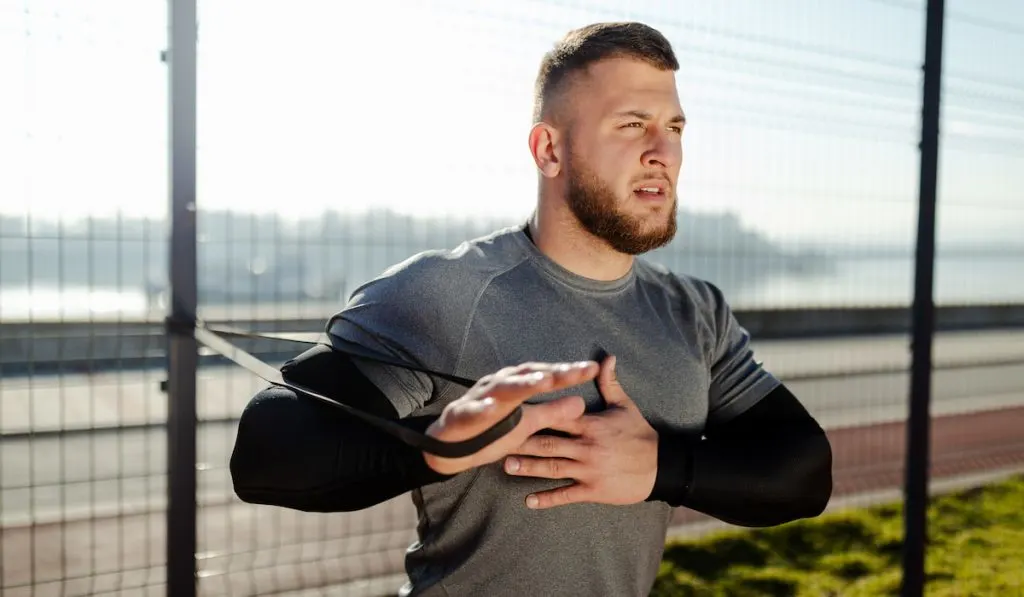
The external rotation exercise helps swimmers strengthen the external deltoids, which are vital for the breaststroke. It also ensures swimmers develop strong rotator cuff muscles, which help to prevent shoulder injuries.
Performing this exercise with resistance bands or tubing is quite common. But you can also use moderate dumbbells or cable machines if you go to a gym.
To perform external rotations with a resistance band, do the following:
- Begin by attaching a resistance band to a fixed pole at elbow height.
- Hold the resistance band with your hand farthest away from the pole.
- Pull the resistance band across your body with your elbows bent at 90 degrees.
- Maintain a good posture as your return slowly to the starting position.
Hip Abductions With a Resistance Band
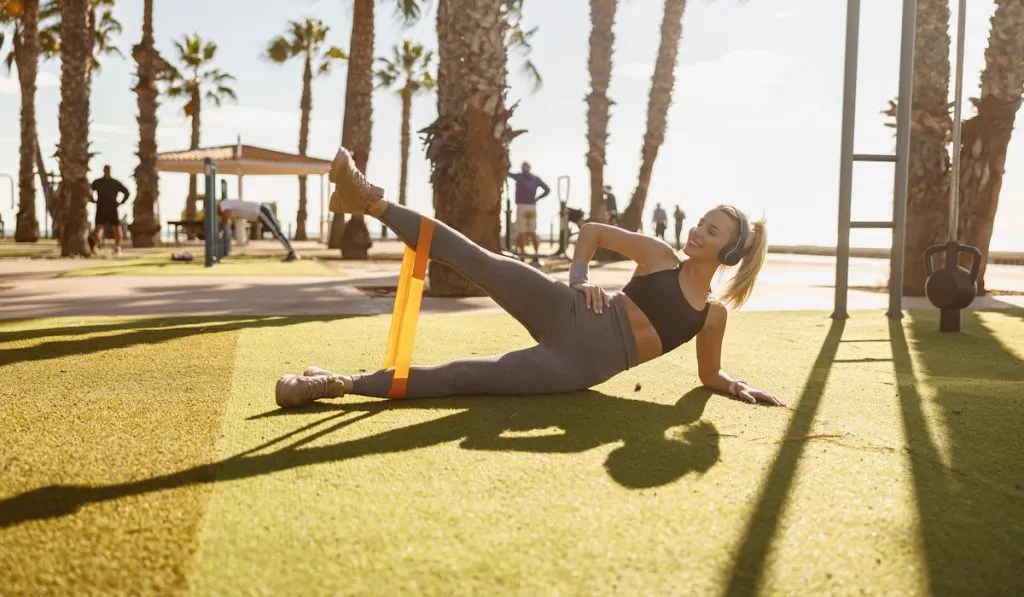
Developing the abductor muscles is essential for a swimmer to have a strong breaststroke kick. Well-developed abductor muscles also ensure the swimmer can create a powerful snapback effect. The elevated snapback effect, in turn, increases the kick strength.
Hip abductor exercises with resistant bands help swimmers develop strong hip flexor and abductor muscles. In place of resistance bands, you can strengthen these muscles using a cable or abductor machine.
To perform hip abductions with a resistance band, do the following:
- Stand sideways with a resistance band tied to a pole and your foot.
- Hold the pole for extra support and stabilize your hips.
- Keep your knees straight and extend your leg sideways as you pull the resistance band.
- Slowly return to the starting position and keep your legs straight.
Hip Thrusts
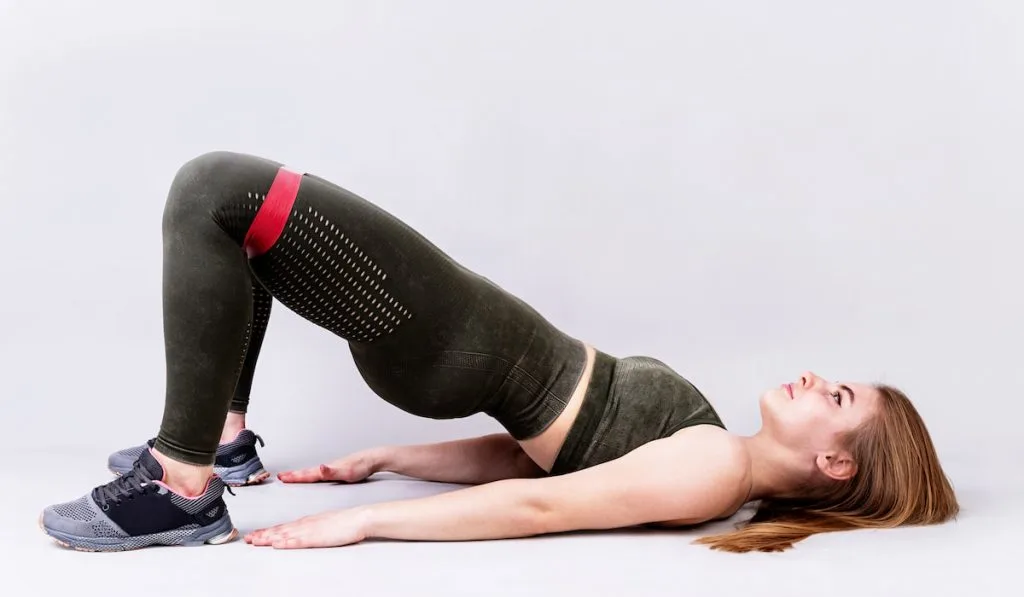
The hip thrust helps strengthen their hip flexors, glutes, and hamstrings.
There are several variations of hip thrusts. You can start with bodyweight hip thrusts and progress to doing them on exercise balls. Once you have mastered it, you can try doing weighted hip thrusts.
How to execute bodyweight hip-thrusts:
- Start by comfortably laying down on your back.
- Ensure your feet are flat on the floor with your knees bent.
- Let your arms rest on the floor close to your body.
- Push your hips from the floor as far as you can, extending your hamstrings in the process.
- Lower yourself to the start position in a controlled manner and repeat the exercise.
Lunges
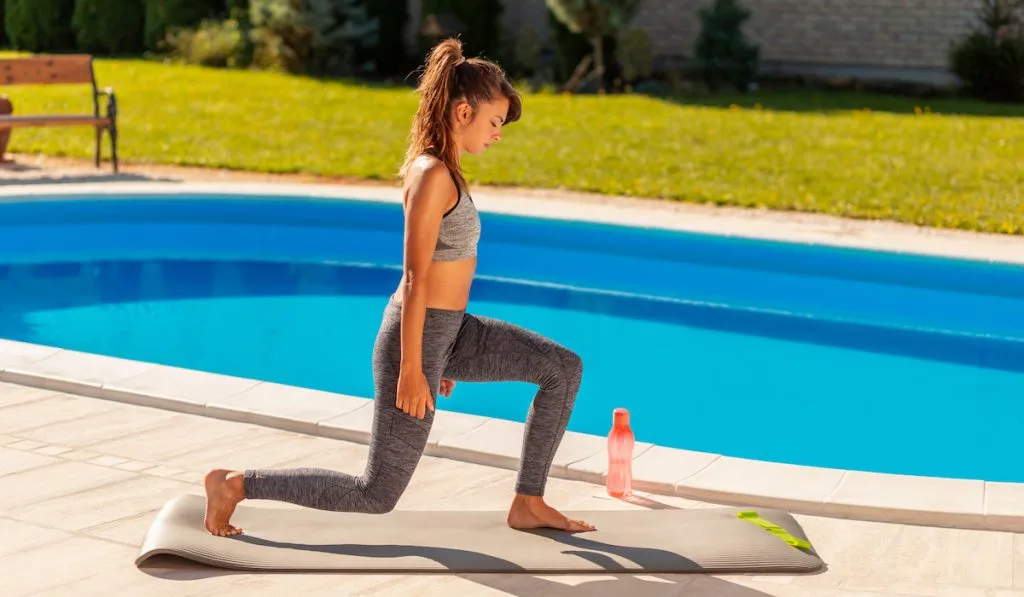
The lunge helps swimmers develop the vigor of the legs. By making the legs stronger, lunges improve the strength of breaststroke kicks.
Besides strengthening calves, lunges make the quadriceps, glutes, and hamstrings stronger.
There are several variations of the lunge breaststroke swimmers can try. They include the reverse lunge, bodyweight lunge, weighted lunge, and jumping lunge.
How to execute bodyweight lunges:
- Start by standing upright with your feet shoulder-width apart.
- Take a step forward and lower yourself until the opposite knee is parallel to the floor.
- Ensure your back is straight, and do not bring your knee over the forward foot.
- Push back up using your forward foot and return to the start position.
- Repeat the exercise on the opposite leg.
Medicine Ball Slams
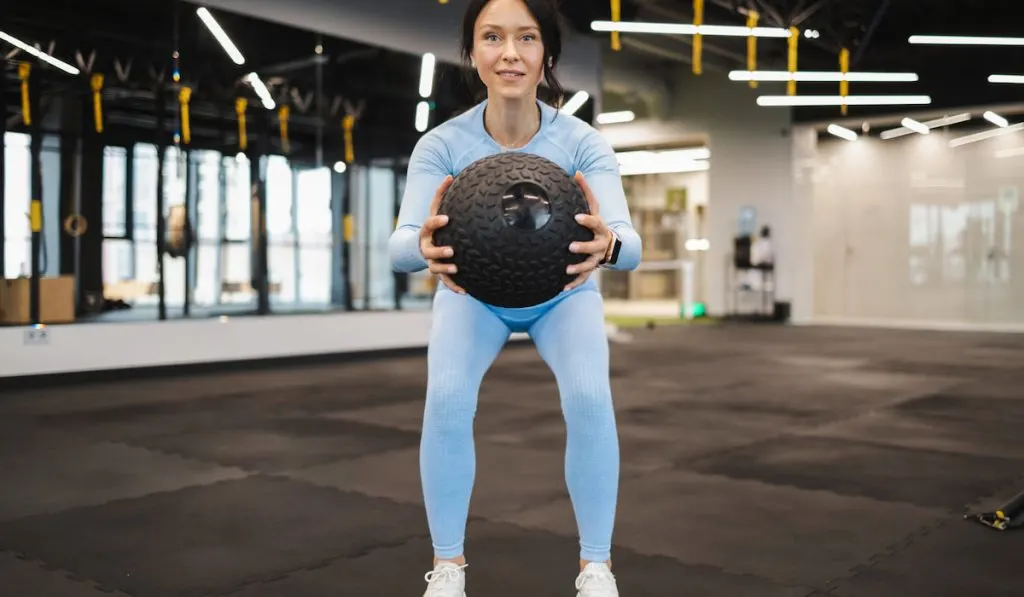
The medicine ball slam helps breaststroke swimmers develop explosive power. With this exercise, swimmers can also strengthen their backs, chest, and arms. However, the main focus is explosiveness and power.
How to perform medicine ball slams:
- Begin by holding the medicine ball in front of you.
- Create a triple extension with your legs and lift the ball over your head.
- Once you feel your abdominal muscles stretch, slam the ball on the floor as hard as possible.
- Catch the ball and repeat the process.
Push-Ups
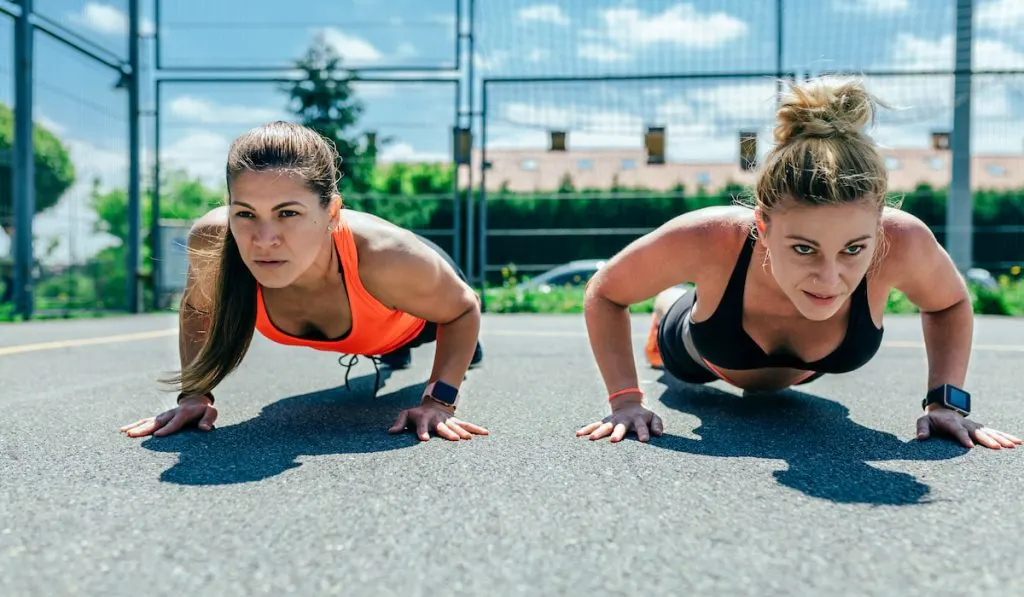
Push-ups help swimmers develop their biceps, triceps, and chest muscles. There are several variations of push-ups, and you may find one more suitable for you than the others.
How to execute push-ups:
- While facedown, support your body weight with your hands and toes shoulder-width apart.
- Ensure your body is in a straight line as you lower your chest by bending your elbows backward.
- Push your upper body upward and return to the starting position.
Pull-Ups
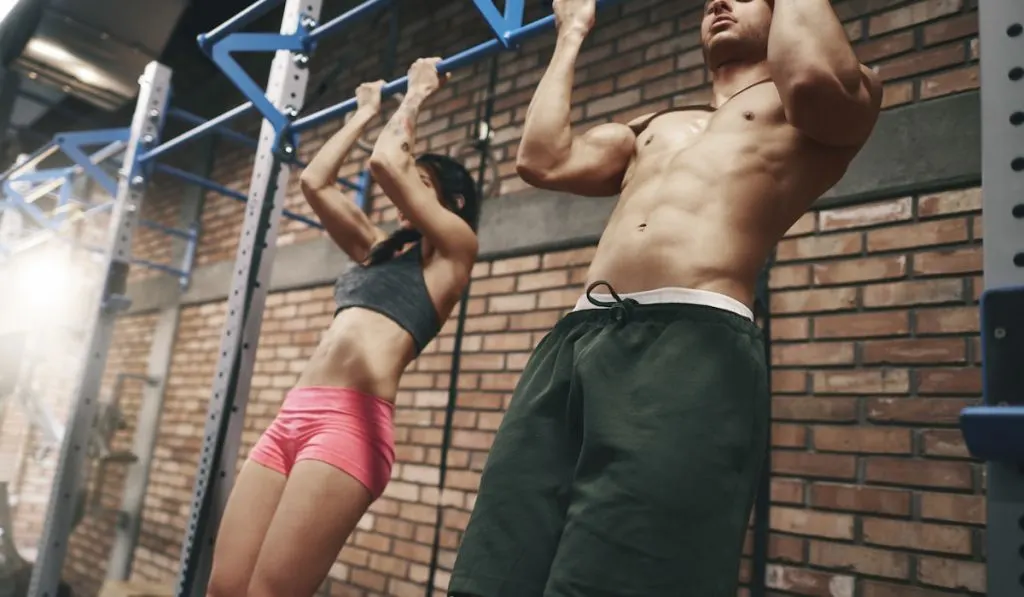
The pull-up is ideal for any swimmer regardless of your preferred stroke. Pull-ups help swimmers develop their lats and back muscles. It also helps them to strengthen their biceps.
The lats and backs are large muscles that play a vital role in all swimming strokes. Once a swimmer develops these muscles, they can generate the power needed during their pull.
How to execute pull-ups:
- Start by holding onto a pull-up bar with your hands shoulder-width apart.
- Brace your core as you retract and stabilize your scapula.
- Pull yourself up and ensure your head passes the bar.
- Ensure you use only your back to pull yourself up.
- Lower yourself slowly as you return to the start position.
Planks
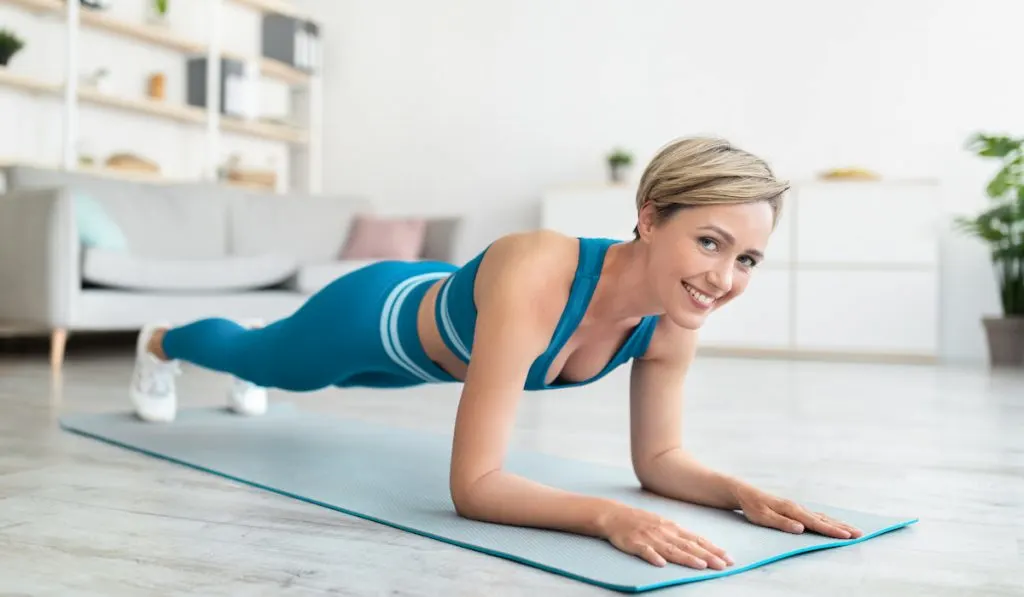
The plank helps breaststroke swimmers develop their overall core strength. Core strength is required for all strokes, including breaststroke.
The plank focuses and strengthens the transverse abdominis and rectus abdominis. It also works on the lower back and shoulders.
Once you master holding the plank for long periods, you can try the more challenging variations of this exercise.
How to perform the plank:
- Take the standard plank position and keep your elbows flat and apart.
- Ensure your body is in a rigid, straight line.
- Try holding this position as long as you can.
- Ensure you do not lift your butt or drop your hips.
Physioball Hamstring Curls
The physioball hamstring curl helps breaststroke swimmers strengthen their hamstrings. It also targets gluteus maximus and erector spinae – two groups of muscles, which allow swimmers to maintain a streamlined position.
How to execute a physioball hamstring curl:
- Start by lying on your back with a physioball under your heels.
- With your core muscles tightened, raise your hips.
- Try pulling your heels towards your buttocks without dropping your hips.
- Straighten your legs, return your body to a straight line, then repeat the exercise.
Russian Twists
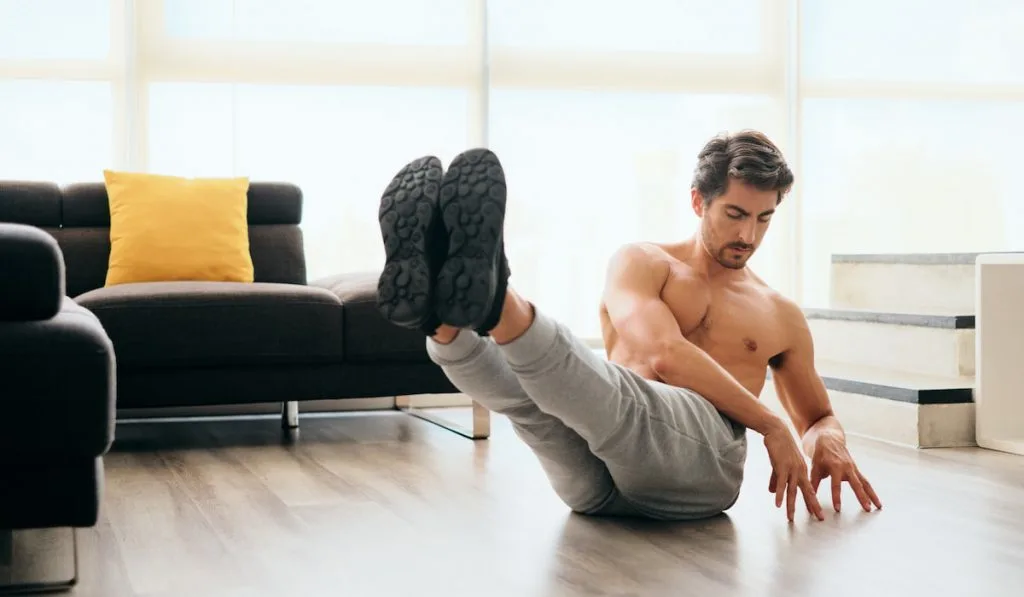
The Russian twist helps breaststroke swimmers improve the strength in their oblique muscles.
Oblique muscles are necessary for breaststroke swimmers to make powerful forward lunges with their arms. The Russian twist also helps in general core development.
How to perform Russian twist:
- Start by sitting on the floor and bending your knees.
- Lean back slightly and lift your legs 1 or 2 inches off the ground.
- Twist your torso to one side while using your hand as momentum, then twist in the opposite direction.
- Ensure your head remains facing forward and avoid swaying your legs.
Squats
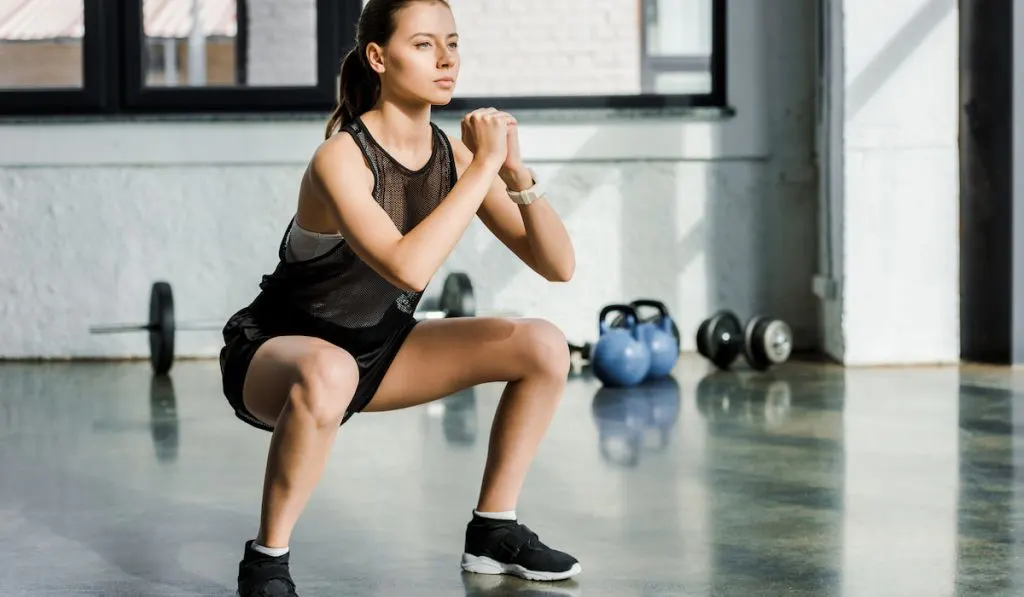
The squat helps a swimmer develop strong legs. The main focus of this exercise is the glutes and the quadriceps. It also allows swimmers to strengthen their calves and hamstrings.
Squats help breaststroke swimmers develop explosive and powerful breaststroke kicks making them swim faster.
How to perform squats:
- Start by placing your feet shoulder-width apart and point your toes slightly out.
- Then bend your knees and begin to lower yourself like you are about to sit.
- Continue to lower your body until your hips are below knee height.
- Push yourself back up as you return to the start position and repeat the exercise.
Single-Leg Romanian Deadlifts
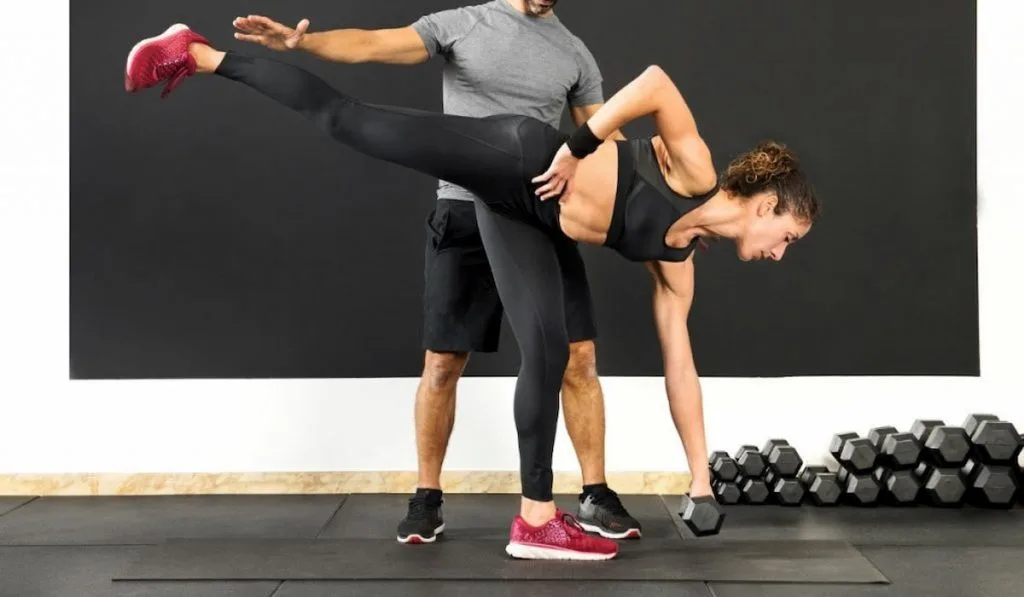
The single-leg Romanian deadlift is an exercise that focuses on developing the glute and hamstring muscles. You can try switching between the single-leg Romanian deadlift and the hip thrust to give your exercise routine a bit of variety.
How to execute single-leg Romanian deadlifts:
- Begin with your feet shoulder-width apart while keeping your knees bent slightly.
- Lift one foot and lower your upper body forward while the raised foot extends backward.
- Once you feel the stretch in your hamstring, return your body to the start position and lower your raised leg.
- Repeat this exercise on the opposite foot.
Standing Hip Internal Rotations
The standing hip internal rotation targets the muscles responsible for the internal hip rotations. This movement is used in the recovery phase of the breaststroke kick.
Although breaststroke swimmers benefit the most from this exercise, other swimmers should not ignore it.
How to execute standing hip internal rotation:
- Start by standing on one foot. Then stretch your arms and trunk towards the inner side of your standing foot while using your standing foot as a pivot point.
- Next, stretch your hands above your head towards the ceiling.
- Keep your raised leg bent at the knee and move it toward the ceiling along with your upper body.
- Return to the start position and repeat the exercise for the opposite foot.
Resources:
- https://swimlikeafish.org/5-dryland-workouts-for-breaststroke-swimmers-to-develop-more-speed-and-power
- https://www.eatsleepswimcoach.com/dryland-training-breaststroke
- https://www.usms.org/fitness-and-training/articles-and-videos/articles/dryland-exercises-to-improve-your-breaststroke
- http://lifeasaninvestment.com/2015/10/15/dry-land-exercises-for-swimmers-breaststroke
- https://swimcompetitive.com/dryland-training/dry-land-exercises-for-breaststroke-swimmers
